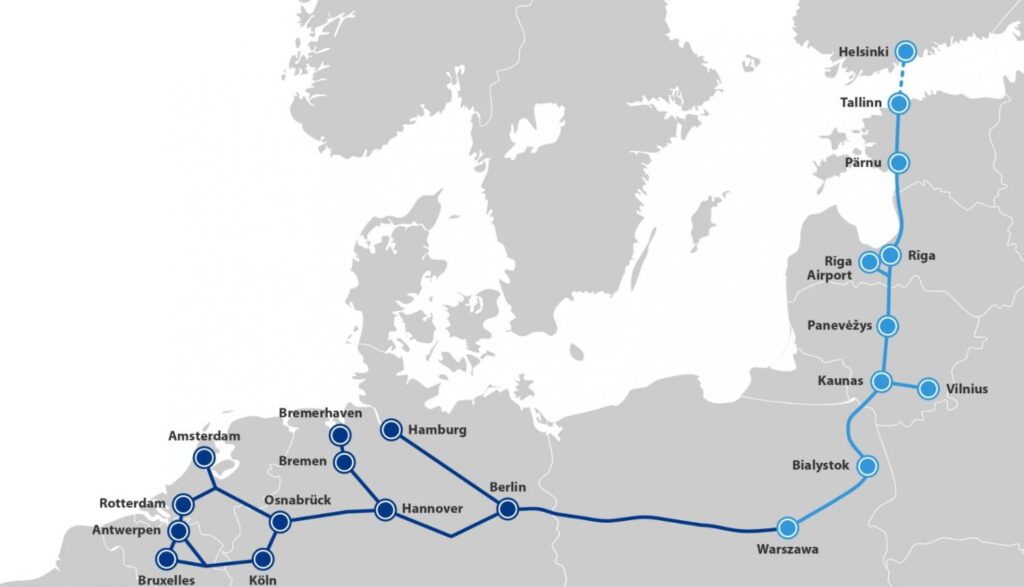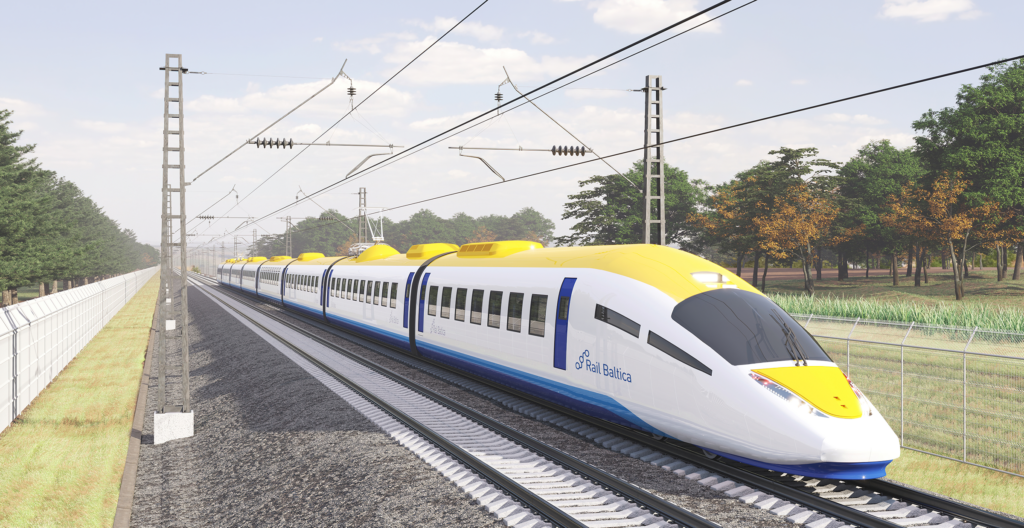The Estonian, Latvian and Lithuanian joint venture Rail Baltic, aiming to connect the Baltic states and Poland with the rest of Europe by railway, will receive €928 million from the Connecting Europe Facility, the European Union’s instrument for strategic investment in transport infrastructure; the funding is on top of the €1.2 billion already received from the EU.
“This substantial funding, combined with national co-financing from the three Baltic states, will exceed €1.1 billion, enabling necessary activities for further high-speed infrastructure development to connect the Baltic region with the rest of Europe,” the Rail Baltic joint venture, RB Rail, acting on behalf the Estonian, Latvian and Lithuanian governments, said in a statement.
The EU commissioner for transport, Adina Vălean, said that “Rail Baltic project used to be a priority, now it is a geopolitical necessity”. “We need a resilient transport connection for passengers and freight to and from the Baltic states,” she said in a statement.
“Overcoming different gauges is imperative to create an integrated European railway area that brings fast trains to the region and gives citizens new opportunities to travel between the Baltic states and the rest of Europe. The region needs this sustainable alternative alongside the buses and planes on which it today depends. Under this call, the Baltic section of Rail Baltic will receive €930 million. This is on top of the €1.2 billion already received. An additional €285 million will be allocated to the Rail Baltic line in Poland,” the commissioner added.
Commencing construction
Marko Kivila, the CEO of RB Rail operations in Estonia, said that, in 2023, the focus is on commencing mainline construction in all three Baltic states, which includes the construction of mainline objects and related infrastructure facilities and access roads.

Together with the recently approved additional financing, Rail Baltic has secured approximately €2.7 billion from the Connecting Europe Facility and national funding.
Rail Baltic is a greenfield rail transport infrastructure project with a goal to integrate the Baltic states in the European rail network. It was started in 2010 and as of 2020, the high-speed railway connection from Tallinn to the Lithuanian-Polish border was expected to be completed by 2026.

